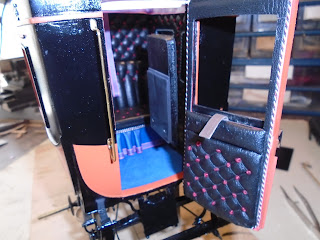THE IMPORTANCE OF THE WHEELS IN THE ROYAL MAIL COACHES
In this image it is possible to see the scaling of the rays at 3 and 7 º.
The various stages of wheel construction.
Jig to center and sharpen the spokes in the center of the wheel.
There were two components in the carriages, which the coachmen paid special attention to, the spear and the wheels, the first when it broke, the carriage was uncontrolled, and the wheels collapsed causing unpredictable accidents, each carriage of the original malaposta French, weighed approximately 1,900 kg. Empty, plus the passengers, up to 12, plus the mail load and other luggage, in total would be approximately 2,600 kg. That the wheels had to support along 300 km of the route between Lisbon Coimbra and Porto, for this reason the wheels of the carriages had special characteristics to withstand this enormous effort, to give an idea of the robustness of these components, each rear wheel, therefore the largest, weighed between 60 and 70 kg, with the hardware, the cubes and the pines were made of hollywood, and with the semi-green wood, because in drought it was impossible to work it, had a behavior like iron , to give it even greater robustness, the rays were not symmetrical, but rather staggered at 3 and 7 degrees to the cube on the outside, in the investigations I have made in this respect, there are reports of, in the hottest months of the year I used to wrap a burlap soaked in water around the hub near the rays in order to keep the whole set more uniform and prevent the rays of the sun from falling on them, causing clearances and cracks and thus avoiding the collapse of the wheels. all the stations change a blacksmith's shop where they had spare wheels for all eventualities, the wheel axles were also lubricated with some regularity due to the great friction caused by the weight and great distances covered, the lubricants used were a mixture of oil with soap.
Regarding the wheels of this miniature that I am about to start, since they are very similar to the previous ones, I will not dwell on details, only the main parts that compose them, several people have approached me about the construction of the wheels, since it is a job that requires some skill and a lot of training, but here are some photos of this work.


























































